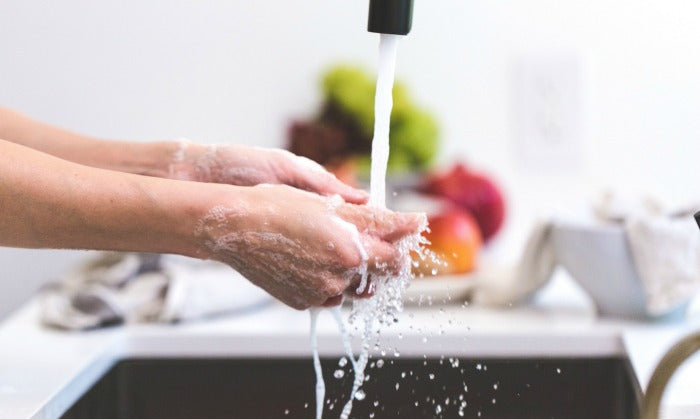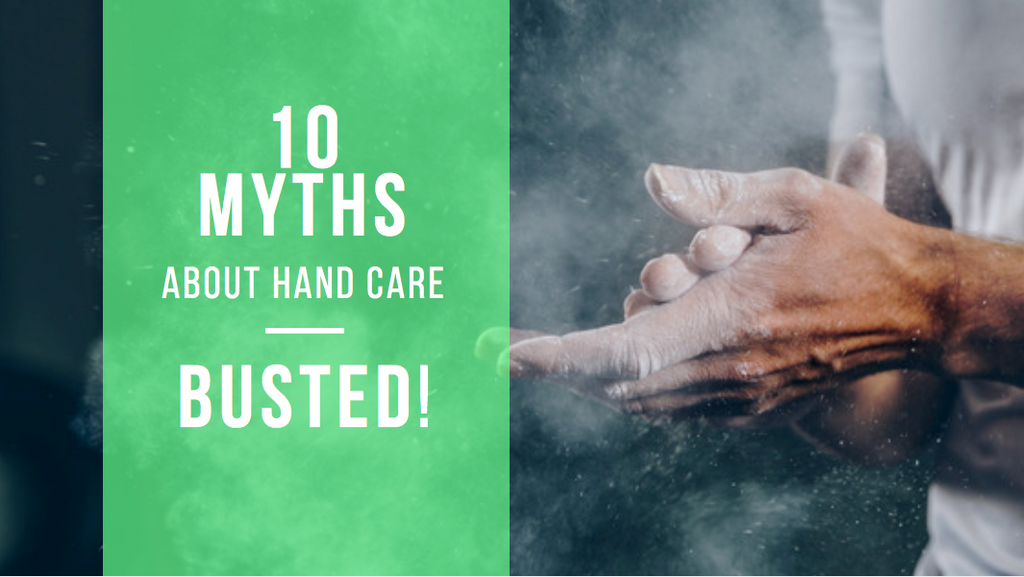As an athlete, you know the importance of practice and maintaining a consistent schedule of training. Whether you are competing or simply working on your overall fitness, anything that gets in the way of you being able to work out at full capacity is more than just a small nuisance. Getting a rip (when skin is removed from the palm of the hands or around the wrists) inhibits you from being able to train or practice as you normally would. So prevention and treatment of rips should be taken seriously.
Unfortunately, there is a lot of misinformation out there on the subject. Below is RIPT's roundup of some popular myths concerning hand care and rip treatment. Use this information to take better care of your hands, get back in the gym, and stay on top of your goals.

1. Moisturizing is the best way to prevent hand rips.
This one is partly true, but moisturizing alone won’t solve your problems. Dry skin is more likely to crack, so keeping your skin moisturized is important. However, super soft hands will also rip. The key is finding a balance, and this means paying special attention to the size and shape of your calluses. Once a built-up callus forms a hard shell that you can pinch it is more susceptible to ripping. According to the CrossFit Journal, calluses should be smooth so they protect your hands, but they should also be shaped so that there aren’t any ridges that can get caught and easily rip open. In short, keep your hands moisturized and your calluses smooth and rounded.
2. You should use Hydrogen Peroxide or rubbing alcohol to clean your rip.
No matter how well you protect your hands, rips are sometimes inevitable, so it’s important to know the fastest and safest way for your hands to heal. Whenever you get a rip, disinfecting the wound is important, but reaching for the Hydrogen Peroxide or rubbing alcohol can actually cause more harm than good. In fact, case studies indicate Hydrogen Peroxide can harm the tissue, which will delay the healing process. Instead, run the skin under cool water for at least five minutes to clean the area. Use soap around the rip, but not in it, to remove excess debris and keep bacteria from getting in. Then you can apply an antibiotic cream, or an all-natural solution like RIPT’s Quick Fix.
3. Wounds need to be allowed to “air out” to heal faster.
After you’ve cleaned your rip, a common misconception is that you need to let the skin “breathe.” In reality, an exposed rip is more susceptible to infection. Treat a rip like any other wound by covering it to keep out water, dirt, and other germs that could slow down the healing process. This will also keep you from causing further damage to the area while you are asleep or going about your day.

4. Using hot water to wash your hands is important to kill bacteria.
According to the International Journal of Consumer Studies, washing your hands in hot water isn’t more effective when it comes to killing germs. It can, however, cause skin irritation. Besides that, running your hands under scalding water can break down the outer protective layer of your hands, which keeps bacteria out. Therefore, it’s best to wash your hands and clean out rips with water that’s a comfortable temperature.
5. Shaving or using a pumice stone on a callus will cause it to grow back quicker.
Calluses are the body’s natural response to repeated friction on a specific part of the body. For Crossfitters and gymnasts, calluses form because of the friction of your hands against the bars. The only way to stop calluses from forming is to stop the friction that caused them in the first place. So in the case of athletes, whose training requires this repetitive friction, it’s important to shape the calluses so they don’t get too thick and cause a rip. There is no scientific evidence to back up the theory that shaving or shaping a callus will make it grow back faster -- only the repeated friction will have this effect. The American Academy of Dermatology actually suggests filing down a callus as part of their recommended care. This is also why RIPT includes a grindstone in their 3 Phase Hand Care Kit.
6. Calluses are bad and they cause rips.
A callus forms to protect you. It’s part of your body’s immune system response to the repeated friction. If you’re an athlete, the formation of calluses is a good thing -- they’re like a shield for your hands. What you should be careful of is calluses that become too big or hard because then they are susceptible to rips. A smooth, moisturized, well-rounded callus won’t get caught on a bar or a weight and rip.
7. Topical Antibiotics speed the healing of wounds.
There is some debate about this, but studies have shown that covering a small wound with an antibiotic cream (like Neosporin) has no effect on healing time. Using petroleum jelly is just as effective, as it keeps the area moisturized. With antibiotic creams, you also run the risk of one of the ingredients irritating the skin.
8. You should keep your wound dry.
You might have been told that it’s important to keep a wound dry, but you could actually be slowing down healing time. Blood vessels regenerate quickest when wounds are kept moist and covered. Vaseline or RIPT Quick Fix will do the job. RIPT's Quick Fix is an all natural formula that contains essential oils known to decrease skin inflammation and nourish the epithelial cells while they work to close the wound.
9. Vitamin E can help your rip heal without a scar.
Vitamin E has been widely studied, and yet there is no scientific evidence to back up the claim that it’s good for healing wounds. One study conducted on patients with postoperative scars concluded topical Vitamin E had no benefit. Another study compared the effects of Vitamin E with a regular moisturizing cream. The Vitamin E was found to have no effect on the appearance of scars and actually worsened the look of the scar in some cases. It also caused skin irritation in several of the participants.
10. You know it’s a good sign when a scab forms.
Scabs form when the wound is too dry, and we already know wounds heal quicker when they are kept moist and covered. According to Dr. Thomas Erskine, who is the director of the Center for Wound Care in Vacaville, CA, a scab slows down the regeneration of new skin cells. A scab can also trap bacteria and inflammatory tissue, further slowing down the healing process.
Hopefully, by busting these 10 common hand care myths, you have more knowledge to keep your hands healthy and ready for workouts!


Leave a comment: